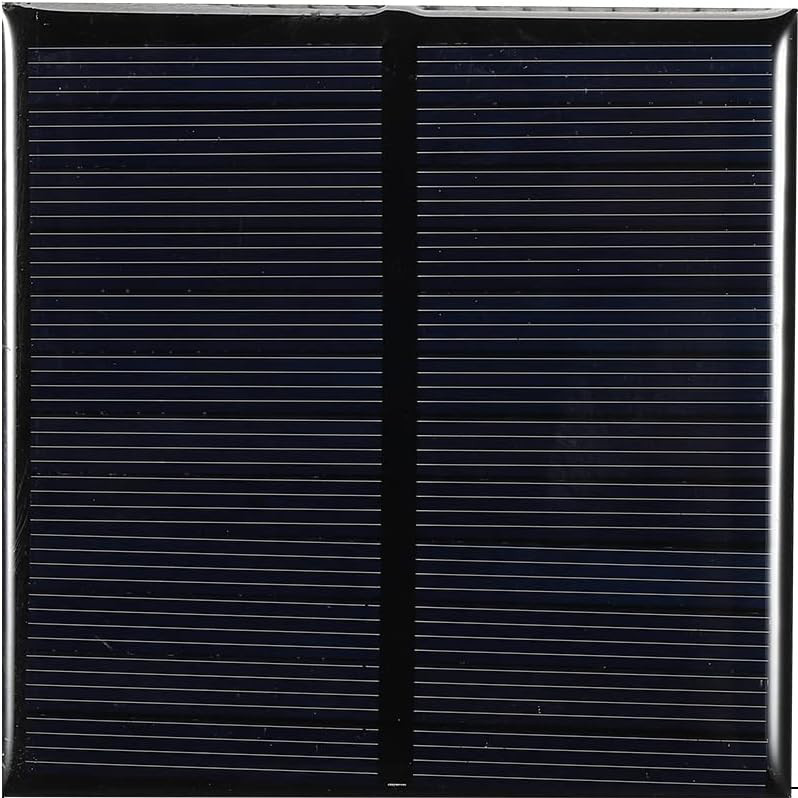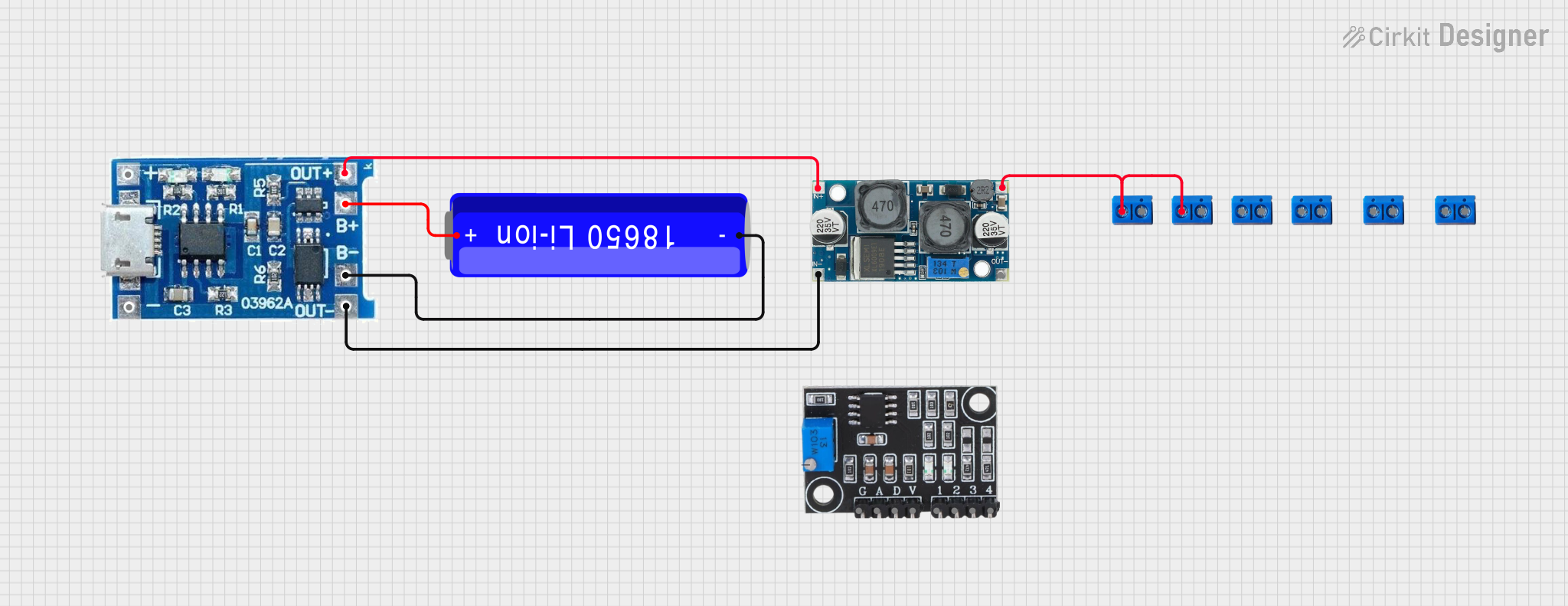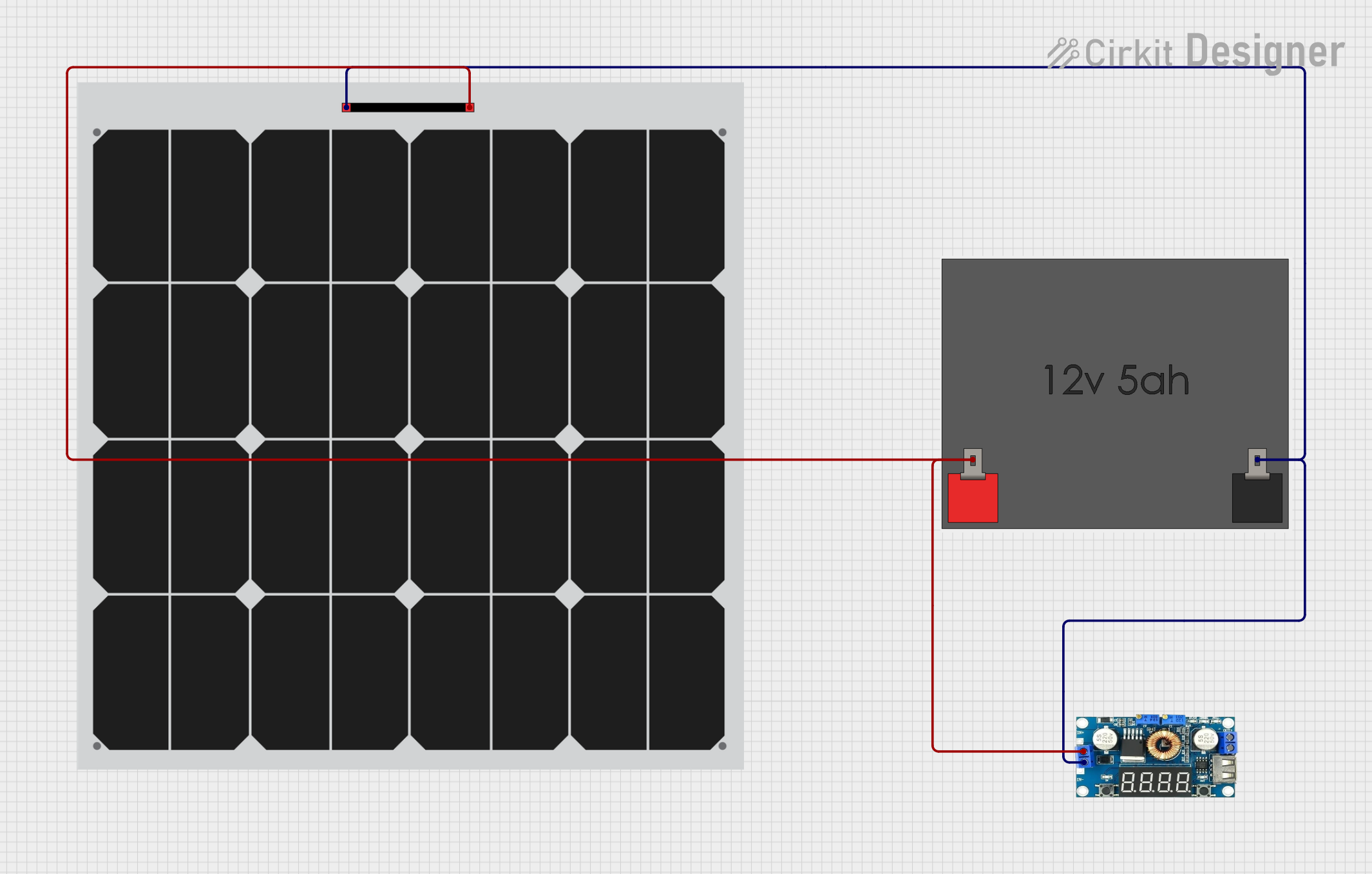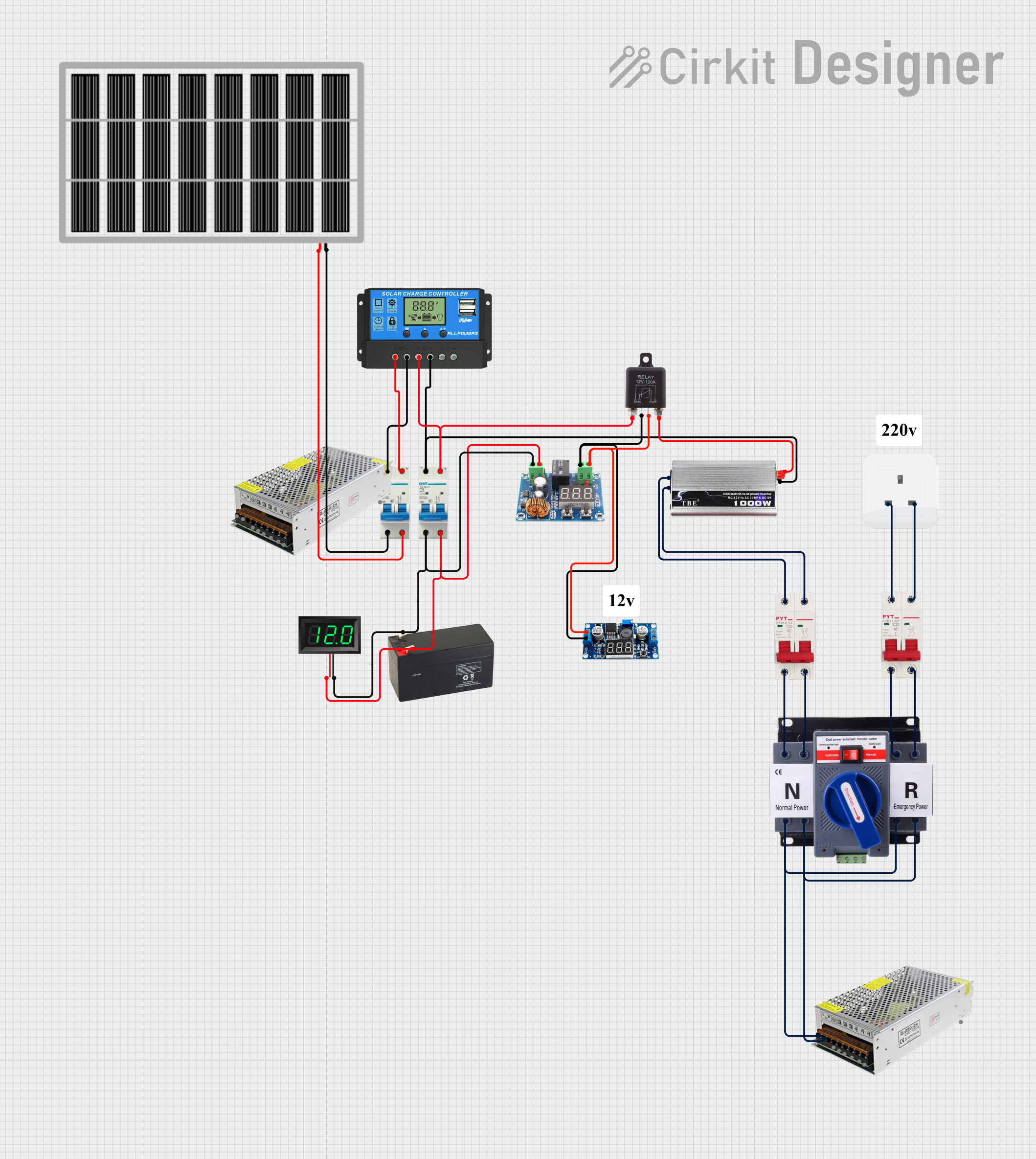
How to Use 70mm x 70mm Solar Panel: Examples, Pinouts, and Specs

 Design with 70mm x 70mm Solar Panel in Cirkit Designer
Design with 70mm x 70mm Solar Panel in Cirkit DesignerIntroduction
The 70mm x 70mm Solar Panel is a compact and efficient photovoltaic module designed to convert sunlight into electrical energy. Its small size and lightweight design make it ideal for low-power applications, such as powering sensors, small electronic devices, or educational projects. This solar panel is a great choice for hobbyists, students, and engineers looking to integrate renewable energy into their projects.
Explore Projects Built with 70mm x 70mm Solar Panel

 Open Project in Cirkit Designer
Open Project in Cirkit Designer
 Open Project in Cirkit Designer
Open Project in Cirkit Designer
 Open Project in Cirkit Designer
Open Project in Cirkit Designer
 Open Project in Cirkit Designer
Open Project in Cirkit DesignerExplore Projects Built with 70mm x 70mm Solar Panel

 Open Project in Cirkit Designer
Open Project in Cirkit Designer
 Open Project in Cirkit Designer
Open Project in Cirkit Designer
 Open Project in Cirkit Designer
Open Project in Cirkit Designer
 Open Project in Cirkit Designer
Open Project in Cirkit DesignerCommon Applications and Use Cases
- Powering small electronic devices (e.g., LED lights, small fans)
- Charging low-capacity batteries
- Supplying energy to microcontroller-based projects (e.g., Arduino, Raspberry Pi)
- Educational demonstrations of solar energy principles
- Portable or off-grid applications
Technical Specifications
Below are the key technical details of the 70mm x 70mm Solar Panel:
| Parameter | Value |
|---|---|
| Dimensions | 70mm x 70mm |
| Maximum Voltage (Vmp) | 5V |
| Maximum Current (Imp) | 100mA |
| Open Circuit Voltage | 6V |
| Short Circuit Current | 120mA |
| Power Output | 0.5W |
| Material | Monocrystalline Silicon |
| Weight | ~20g |
Pin Configuration and Descriptions
The solar panel typically has two output terminals for electrical connections:
| Pin | Description |
|---|---|
| Positive (+) | Positive terminal for power output |
| Negative (-) | Negative terminal (ground) |
Usage Instructions
How to Use the Component in a Circuit
Connect the Solar Panel to a Load:
- Identify the positive (+) and negative (-) terminals of the solar panel.
- Connect the positive terminal to the positive input of your load (e.g., a small motor, LED, or battery).
- Connect the negative terminal to the ground of your load.
Use a Voltage Regulator (if needed):
- If your load requires a stable voltage (e.g., 3.3V or 5V), use a voltage regulator (e.g., LM7805 for 5V output).
- Connect the solar panel's output to the input of the voltage regulator, and then connect the regulator's output to your load.
Charge a Battery:
- To store energy, connect the solar panel to a rechargeable battery through a charge controller to prevent overcharging.
Integrate with an Arduino UNO:
- Use the solar panel to power an Arduino UNO by connecting it to a 5V input pin or through a battery and voltage regulator.
Example: Powering an Arduino UNO with the Solar Panel
Below is an example of how to use the solar panel to power an Arduino UNO and read data from a light sensor:
Circuit Setup
- Connect the solar panel to a 5V voltage regulator.
- Use the regulator's output to power the Arduino UNO.
- Connect a light-dependent resistor (LDR) to the Arduino to measure light intensity.
Arduino Code
// Example code to read light intensity using an LDR and display it on the Serial Monitor
const int ldrPin = A0; // LDR connected to analog pin A0
void setup() {
Serial.begin(9600); // Initialize serial communication at 9600 baud
pinMode(ldrPin, INPUT); // Set LDR pin as input
}
void loop() {
int lightValue = analogRead(ldrPin); // Read the analog value from the LDR
Serial.print("Light Intensity: ");
Serial.println(lightValue); // Print the light intensity value to the Serial Monitor
delay(1000); // Wait for 1 second before the next reading
}
Important Considerations and Best Practices
- Sunlight Exposure: Ensure the solar panel is placed in direct sunlight for optimal performance. Avoid shading or obstructions.
- Angle of Placement: Position the panel at an angle that maximizes sunlight exposure based on your location and time of year.
- Load Matching: Ensure the connected load does not exceed the panel's maximum power output (0.5W).
- Energy Storage: Use a rechargeable battery to store energy for use during low-light conditions or at night.
- Protection Circuitry: Consider adding a diode to prevent reverse current flow from the battery to the solar panel.
Troubleshooting and FAQs
Common Issues and Solutions
| Issue | Possible Cause | Solution |
|---|---|---|
| Low or no power output | Insufficient sunlight | Place the panel in direct sunlight and adjust its angle for maximum exposure. |
| Output voltage fluctuates | Load exceeds panel capacity | Use a smaller load or add a voltage regulator to stabilize the output. |
| Reverse current flow damages the panel | No protection diode in the circuit | Add a Schottky diode in series with the positive terminal to block reverse current. |
| Device does not power on | Incorrect wiring or loose connections | Double-check all connections and ensure proper polarity. |
FAQs
Can this solar panel charge a smartphone?
- No, the panel's power output (0.5W) is insufficient for charging most smartphones, which typically require at least 5W.
Can I connect multiple panels to increase power?
- Yes, you can connect panels in series to increase voltage or in parallel to increase current. Ensure the combined output matches your load requirements.
Is the panel waterproof?
- The panel is not fully waterproof. It is recommended to use it in dry conditions or enclose it in a protective casing for outdoor use.
What happens if the panel is partially shaded?
- Partial shading reduces the panel's efficiency and power output. Ensure the panel is fully exposed to sunlight for optimal performance.
By following this documentation, you can effectively integrate the 70mm x 70mm Solar Panel into your projects and harness the power of renewable energy!